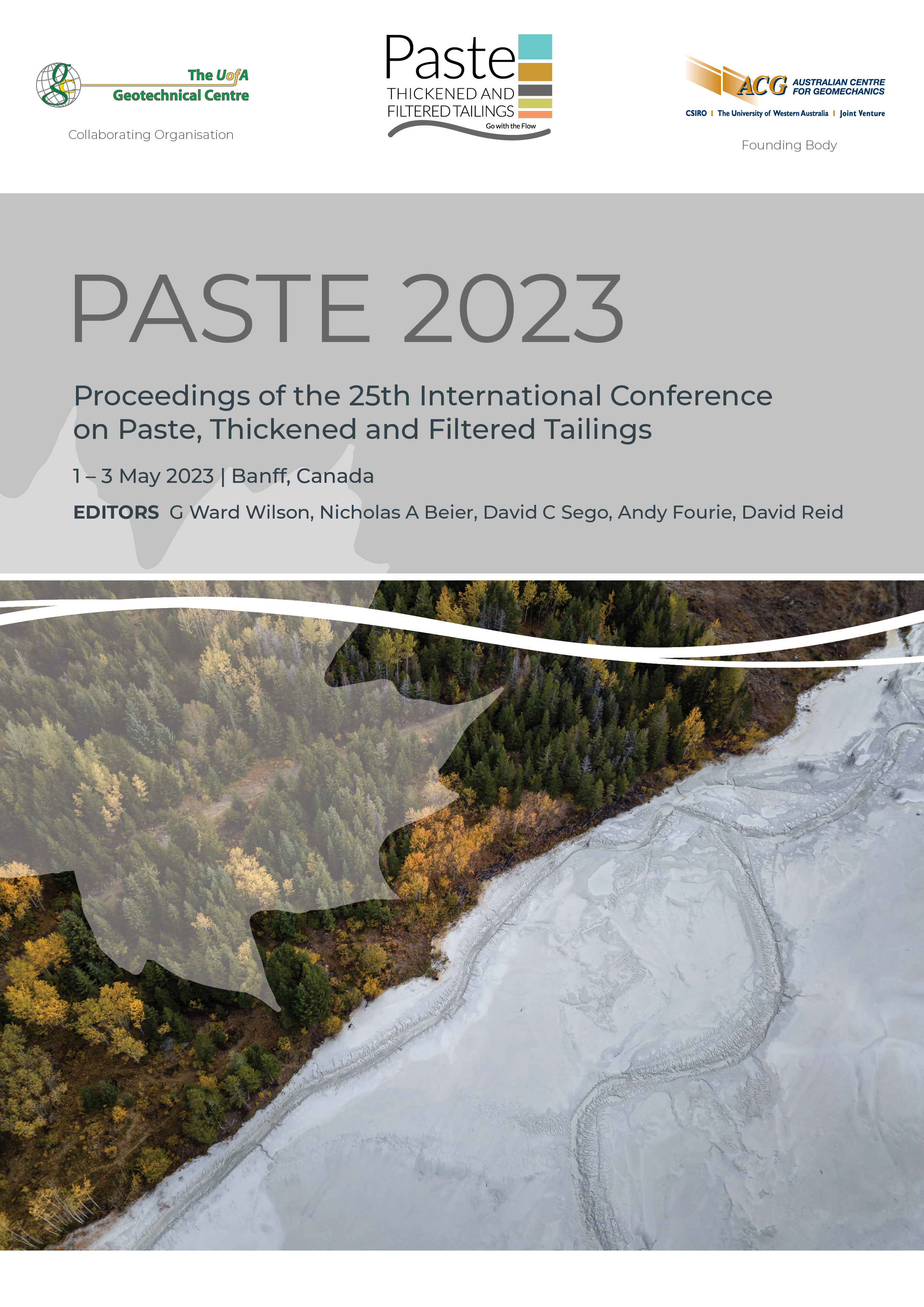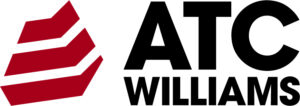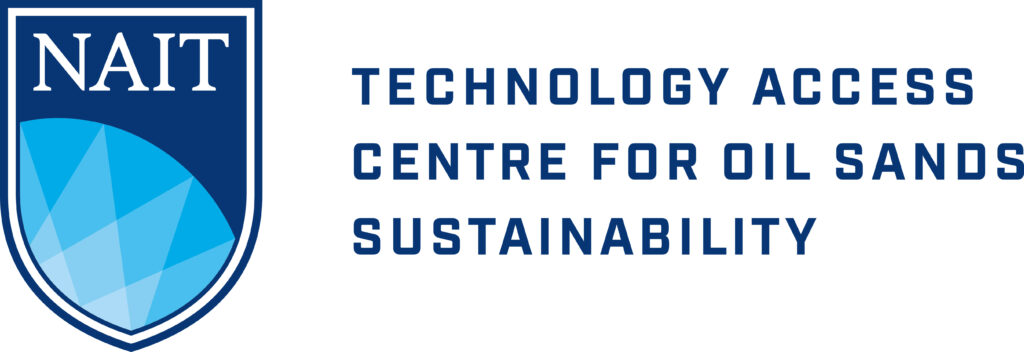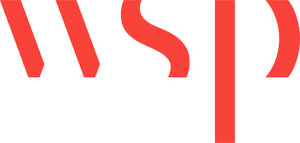The evolution of practice in the field of mine waste and water management in the last 10 years with supporting examples

|
Authors: Julien, M |
DOI https://doi.org/10.36487/ACG_repo/2355_0.1
Cite As:
Julien, M 2023, 'The evolution of practice in the field of mine waste and water management in the last 10 years with supporting examples', in GW Wilson, NA Beier, DC Sego, AB Fourie & D Reid (eds), Paste 2023: Proceedings of the 25th International Conference on Paste, Thickened and Filtered Tailings, Australian Centre for Geomechanics, Perth, pp. 2-14, https://doi.org/10.36487/ACG_repo/2355_0.1
Abstract:
Professional practice in the field of tailings, water, and rockfill management has undergone important changes in the last 10 years, forcing mining companies and practitioners to adapt very quickly. These changes, while already happening, have been accelerated by a series of important failures and the realization that the ways of the past were no longer acceptable. The most significant remaining changes include the realization by mining companies of the importance of their role and responsibilities as Owners in the safe performance of these facilities, the development of new techniques and methodologies to characterize and model the behaviour of these materials, and the integration of new technologies and management approaches to further de-risk projects. The improvement of tailings dewatering technologies has been at the core of some of these profound changes and has allowed the emergence of new mine waste management philosophies that are expressing themselves in a variety of ways throughout the industry. Clear trends have emerged like the deposition of tailings at higher percentage solids, a desire to simplify water management, a push to increase the robustness of infrastructure and systems, and the development of a higher sense of awareness and of more expertise throughout organizations. They also have profoundly changed the way mining companies are now viewing mine waste and water management projects. The following presents an overview of a series of recurrent issues encountered on real projects and how they have been addressed, in particular, through the integration of dewatering technologies. It touches also on some of the key dilemmas facing mining companies since this field remains one of tough choices in the context of the reality of mining projects, the expectations of stakeholders and partners, the financial capacity of companies, the expected life of projects, land access and land/water usage, etc.
Keywords: mine waste management, tailings, water management, dewatering, governance
References:
Australia Government 2008, Risk Assessment and Management, Leading Practice Sustainable Development Program for the Mining Industry, Canberra Australia.
Canadian Dam Association (CDA) 2013, Technical Bulletin: Dam safety guidelines, ed. Canadian Dam Association (CDA), Toronto, Ont.
Canadian Dam Association (CDA) 2019, Technical Bulletin: Application of dam safety guidelines to mining dams, ed. Canadian Dam Association (CDA), Toronto
Canadian Dam Association (CDA) 2020, Technical Bulletin: Guidelines for Tailings Dam Breach Analyses, ed. Canadian Dam Association (CDA), Toronto
Chovan K., Julien M., Ingabire E., James M., Masengo E., Lépine T., Lavoie P. 2021, ‘A risk assessment tool for tailings storage facilities’ Can. Geotech. J. 1–17 dx.doi.org/10.1139/cgj-2020-0329
Falmagne V., Carvalho J.L., Cordova Montaño J., Julien M. 2023, ‘Artificial crown pillar construction and in-pit tailings disposal at the Pinos Altos Mining Complex, Mexico’, CIM Journal, DOI: 10.1080/19236026.2023.2176079
GISTM 2020, Global Industry Standard on Tailings Management, GlobalTailingsReview.org
Julien M. 2016, ‘Governance aspects with mine waste management facilities’ In Proceedings of the 24th World Mining Congress: Mining in a World of Innovation, Rio De Janeiro, Brazil, 18–21 October, 2016
Julien M. 2019, ‘A state of practice undergoing significant changes’, Workshop on Tailings Dam Breach Analysis, Tailings and Mine Waste 2019 Conference, Vancouver, BC, Canada
Julien, M., Masengo, E., Lavoie, P., and Lépine, T. 2019. ‘A risk-based approach to support the implementation of the new guidelines related to tailings management’ In Proceedings of the 6th International Seminar on Tailings Management, Santiago, Chile, 10–12 July, 2019
Julien M, Masengo E 2021, ‘Using soil improvement techniques to retrofit existing tailings storage facilities to increase strength characteristics’, Proceedings of GeoNiagara 2021, Niagara Falls, Ontario September 26 – 29, 2021
Mining Association of Canada 2019. A guide to the management of tailings facilities. Version 3.1, Mining Association of Canada (MAC), Ottawa, Ont.
Morgenstern N.R. 2018, ‘Geotechnical Risk, Regulation, and Public Policy’, Victor de Mello Lecture, Soils and Rocks, São Paulo, 41(2): 107-129 May-August, 2018
Potvin Y., Hadjigeorgiou J. 2020, Ground Support for Underground Mines. Australian Centre for Geomechanics
Silva F., Lambe T.W., Marr W.A. 2008, ‘Probability and Risk of Slope Failure’, ASCE Journal of Geotechnical and Geoenvironmental Engineering, pp. 1691-1699.
© Copyright 2025, Australian Centre for Geomechanics (ACG), The University of Western Australia. All rights reserved.
View copyright/legal information
Please direct any queries or error reports to repository-acg@uwa.edu.au
View copyright/legal information
Please direct any queries or error reports to repository-acg@uwa.edu.au



